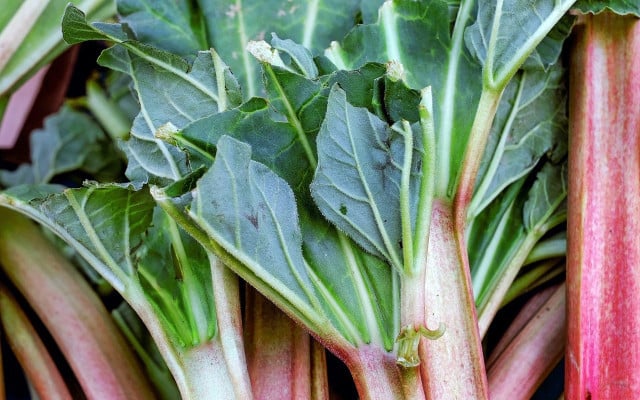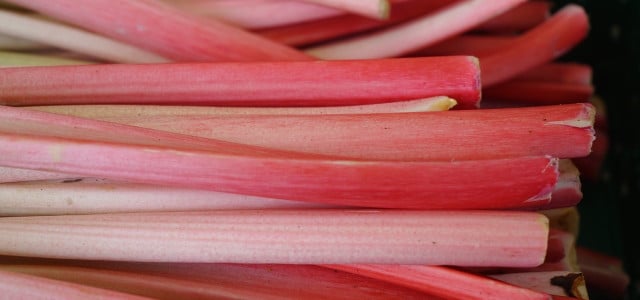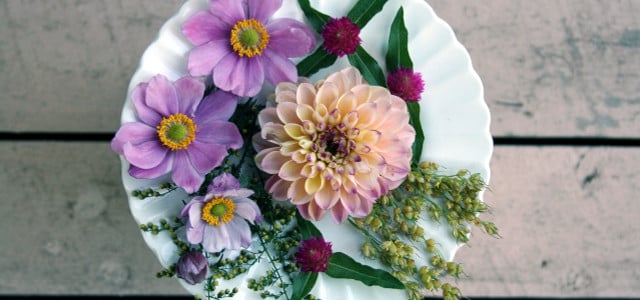The time to harvest rhubarb begins in April and only lasts for a few short weeks. In this article, we’ll tell you how to harvest rhubarb, when the ideal time is, and how to avoid common mistakes.
How to Harvest Rhubarb: The Correct Point in Time
Rhubarb can be prepared in many delicious ways, and because of its high mineral content, this pleasantly tart vegetable is considered especially healthy. Rhubarb is beloved by many, but there’s one catch for its devoted fans: rhubarb can only be harvested for a short period of time.
MISTAKE #1: Harvesting the rhubarb too late
Rhubarb is generally ready to be harvested beginning in April, and ending in late June. The stalks continue to ripen after that time, but they should no longer be harvested and consumed. There are two reasons for this:
- The oxalic acid content is too high: Rhubarb contains oxalic acid, which is not necessarily bad for you. The human body itself produces oxalic acid, and it can be found in many plants, like spinach, kale, and beets. But too much oxalic acid can cause damage. In high enough concentrations, it can cause stomach irritation, kidney problems, and leach calcium from the body. The longer the rhubarb ripens, the more oxalic acid is produced — which is why you should only ever harvest rhubarb until the end of June.
- The rhubarb plants must be able to regenerate: At the end of June, rhubarb plants have a second growth spurt. They must complete this growth cycle and be allowed to bud so that they can return the following year. If you harvest rhubarb after the end of June, you may not harvest any at all the following year.
How to Harvest Rhubarb Properly



MISTAKE #2: Harvesting your rhubarb before it’s ripe
This is how you decide when your rhubarb is ready to be harvested: The right time usually begins in April. You’ll know that the individual stalks are ready to be harvested when the stalks of the leaves are about 10 inches long, and the leaves are no longer crinkly, but have a flat and smooth surface. The stalks can technically be harvested before this, but green stalks aren’t as sweet as red stalks.
When thinking about how to harvest rhubarb, remember that the stalks are what you’re after, not the leaves. The leaves of the rhubarb plant contain a much higher concentration of oxalic acid than the rest of the plant, and should never be eaten. But that doesn’t mean you have to throw them away! For some ideas on how to use them read: Rhubarb Leaves: Don’t Let Them Go to Waste
MISTAKE #3: Discarding the rhubarb leaves after harvest
The roots are edible, but are not usually used for culinary purposes. However, they do have many applications in natural medicine.
Here’s how to harvest rhubarb in 4 steps:
- Firmly grasp the stalk on the lower end and turn it slowly until it comes off. Avoid cutting the stalks, as this will disturb the growth cycle of the plant.
- Cut off the leaves and the lower white end of the rhubarb stalk, as these parts contain high amounts of oxalic acid and are not safe to eat.
- Take this opportunity to cut off the buds of the plant, to help encourage growth.
- Don’t harvest all of the rhubarb stalks at once: always allow at least one third of the stalks to remain, so that there isn’t too much strain on the plant.
MISTAKE #4: Cutting the rhubarb stalks
MISTAKE #5: Harvesting all of the rhubarb
Bonus mistake: Only ever trying rhubarb in sweet dishes. Check out our vegan savory rhubarb recipes to get to know the vegetable from its hearty side!
Read on:
This article has been translated from German to English by Christie Sacco. You can read the original here: Rhabarber Erntezeit: Wie lange darf das saure Gemüse geerntet werden?
** Links to retailers marked with ** or underlined orange are partially partner links: If you buy here, you actively support Utopia.org, because we will receive a small part of the sales proceeds. More info.Do you like this post?







